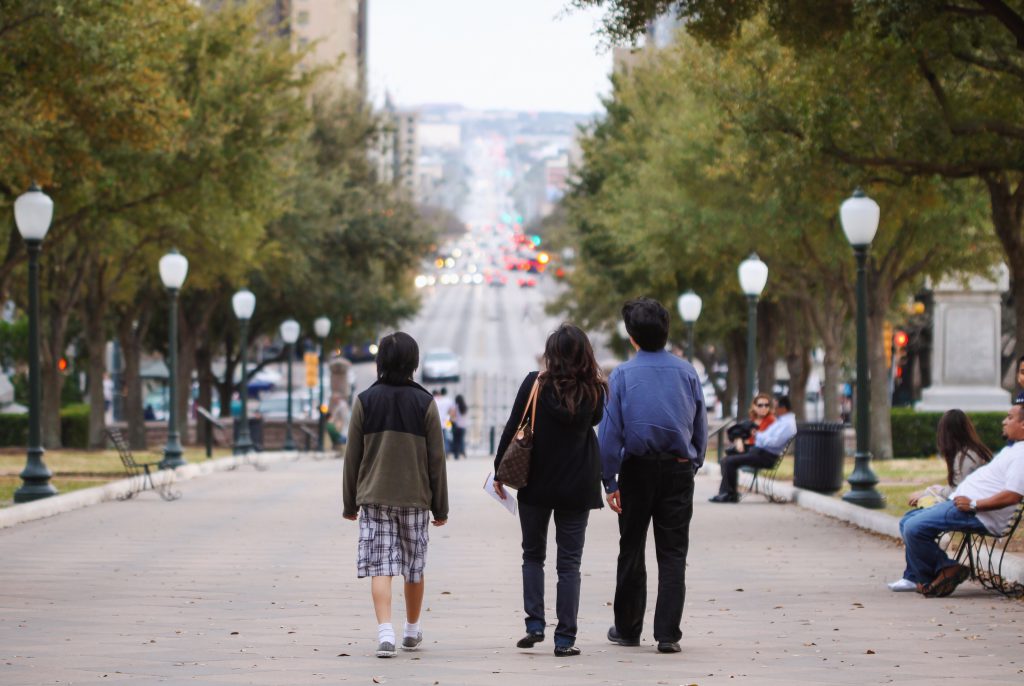Posted by Christina Greene on Mon, Nov 30, 2020 @ 1:01 AM
How to Calculate Urban Tree Canopy Cover
By: Richard J. Magill, Magill & Associates, Inc.

Understanding urban canopy cover and the existing community goals and ecosystem processes is critical when deciding to develop plans to enhance tree canopy cover in urban areas. In some cases, particularly in the arid West, expansion of canopy cover could be limited by local natural resources (ex.: water). In other areas, canopy expansion can be limited by human processes (ex.: impervious surfaces, financial limitations).
Careful determination of the desirability of increasing canopy cover with optimal results related to trees species, locations, and canopy health will depend on full consideration of all the long-term costs associated with canopy cover change, balanced against all the potential benefits to the environment and its air-breathing inhabitants.
Once a decision to increase tree canopy cover is made, proactive, long-term urban forest management plans for an enhanced canopy should be developed to:
- Address optimal locations to plant trees relative to infrastructure, use constraints, and human populations;
- describe and understand the ecosystems that result from an increase in tree canopy; and
- identify tree species best suited to local conditions and desired ecosystem services (ex.: planting drought-tolerant species in low-rainfall areas).
The following dynamic tools are currently available (or under development) to help communities and professionals minimize the costs and boost the effectiveness of urban forest management programs:
- Labs: Tree Canopy by Google – Google uses planes to collect aerial imagery around the globe to improve Google Maps and Google Earth. In the Tree Canopy Lab, we use this same imagery data to estimate tree canopy coverage across the City of Los Angeles.
https://insights.sustainability.google/labs/treecanopy - Global Forest Watch- ambitious and new, this $25 million- dollar, web-based tool, created through a partnership of the World Resources Institute (WRI), Environmental Systems Research Institute (ESRI), United Nations Environment Program (UNEP), Google, and a slew of other environmental groups, provides a “near-real time” view of deforestation, reforestation, conservation, and other urban forest issues around the world. https://www.globalforestwatch.org
- i-Tree- A suite of urban forestry analysis tools for collecting and analyzing information on urban forests. i-Tree uses local data to statistically assess urban forest composition and its effects and values related to air pollution removal; carbon storage and sequestration; building energy use; and urban runoff, stream flow, and water quality. Software, training, and technical support are free. https://www.itreetools.org/
- i-Ped– A specialized i-Tree tool for establishing a long-term, large-scale urban pest detection and reporting system. Refer to the i-Tree website above for this and other tools, or report observations and concerns to your state forester (see information below).
- Urban Forest Project Reporting Protocol– This tool helps communities measure, monitor, verify, and reduce greenhouse gas emissions through planned tree planting and maintenance activities that increase the storage of carbon (sequestration) in trees. https:// fs.fed.us/psw/programs/cufr/
- TreeLink— is a networking website for citizens, cities, and sponsors that provides up-to-date technological information and grassroots organizing tools such as email list-serves, publications, and links to local urban forestry resources. https://www.treelink.org/
- Citygreen®— this software program can be used to calculate the monetary values of the economic and ecological benefits (including stormwater run-off, air pollution removal, and carbon storage) provided by trees and other green spaces in specified locations. https://www.americanforests.org/ or www.productsandpubs/citygreen/
- SelecTree and Tree Browser— California-based resource that can help find the name of a specific tree and/or find a tree with desired attributes. Also provides research, community, and technical resources for learning about the importance of protecting healthy urban forests, and incorporating urban wood into the marketplace. https://www.ufei.org/ Similar to the site above, the state of Utah provides a site to select and identify trees for their area. https://www.treebrowser.org
- Forest Service Websites— numerous Forest Service websites provide information on urban forest management, including the Northern Research Station (https://www.nrs.fs.fed.us/units/urban); the Urban Natural Resources Institute (https://www.UNRI.org); the Center for Urban Forest Research(https://www.fs.fed.us/psw/programs/cufr/); and Interface South (https://www.interfacesouth.org/). For other helpful links, go to: https://www.fs.fed.us/ucf.
- State Forestry Agencies— State forestry agencies can also be an important resource for urban forestry management information. To find your state, go to: https://www.stateforesters.org/about_nasf#.
- Additional Resources—In addition to the tools listed above, there are many other sources of urban forest management program expertise including: consulting foresters and private tree care firms, the Cooperative Extension Service (https://www.csrees.usda.gov/ Extension/), land grant universities, urban forestry centers, and numerous nonprofit groups such as the Climate Action Registry (https://www.climateregistry.org/), the National Urban and Community Forestry Council (https://www.treelink.org/nucfac/), the International Society of Arboriculture (https://www.isa.org), the Society of Municipal Arborists (https://www.urban-forestry.com), American Forests (https://www.americanforests.org), and the National Arbor Day Foundation (https://www.arborday.org/) which sponsors numerous programs such as our National Arbor Day and Tree City USA awards.
Primary Reference:
Sustaining America’s Urban Trees and Forests, United States Department of Agriculture,
Forest Service, Northern Research Station, State and Private Forestry, General Technical
Report NRS-62, June 2010

